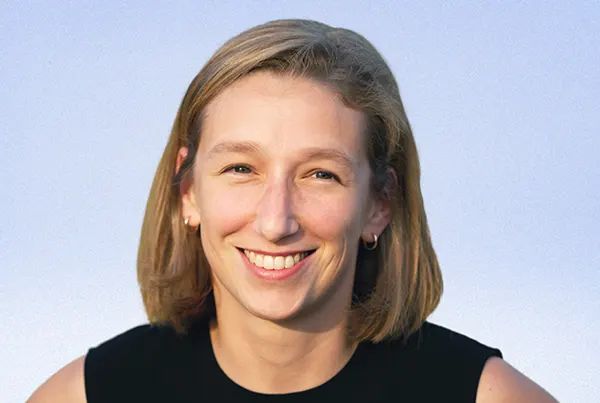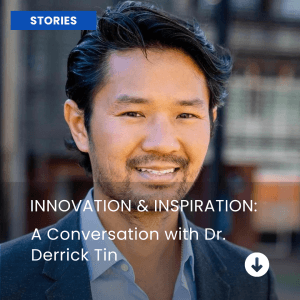

I am a social worker in the San Francisco Bay Area working at the intersection of climate, health and social issues. My team and I recently finished up at qualitative research study looking at the health and social impacts of the recent wildfires that we have had in California. In addition to looking at how these fires are impacting health and well-being in the surrounding communities, we also looked at the perceived effectiveness of the response and recovery resources that survivors utilize after the wildfire.

Fig 1. 2017 North Bay Fires Burn Area (Tubbs, Atlas & Nuns).

Fig 2. 2017 Thomas Fire Burn Area.
I graduated with my Masters in Social Welfare from UC Berkeley in 2019. I had always been interested in how our social environment impacts health outcomes, which is what led me to go back to school. While I was at Berkeley, Northern California saw two of its most destructive wildfire seasons on record. I kept thinking about what short and long-term impacts these fires would have on various social issues that I was learning about in school–mental health, housing, substance use, etc. As social work students, we also think a lot about the effectiveness and sustainability of health and social programs, so I was also interested in the role of response and recovery resources in the aftermath of wildfires. I teamed up with a professor of mine, Dr. Rohini Haar at Berkeley’s School of Public health, who is an emergency room physician, and together we decided to conduct a research study on the health and social impacts of climate change with a focus on the role of response and recovery resources.

Fig 3. 2018 Camp Fire Burn Area.

Fig 4. 2018 Woolsey Fire Burn Area.
We read a lot of research articles about the health and social impacts of wildfires and natural disasters prior to beginning our own study. We found many articles discussing some of the immediate, physical health impacts of wildfires, such as issues related to smoke inhalation. But we found less articles that talked about long-term health and social impacts, so we knew we wanted to make sure we asked participants about those outcomes. We also read a lot of articles that talked about housing and employment issues quantitatively, such as how many homes burned, or how the wildfire impacted local employment rates. But we were really interested in how wildfires impact those same social issues qualitatively. What kind of impacts do wildfires have on housing and employment that cannot be captured in numbers? What we found through our qualitative research was a series of what we called “ripple impacts” in the communities surrounding the wildfire.
First we submitted a proposal to our University’s IRB. Once that was approved, we began recruiting participants to be interviewed for our study. We sent out some recruitment emails on health and social service professional listservs asking. We also attended community meetings in disaster impacted areas in Northern California to recruit participants and to learn more about the long-term impact that the fires were having on the community. We conducted interviews for four months in late 2019 and then began the process of analyzing our data and writing up our study.
It’s helpful to send your work around to your personal and professional networks to increase exposure and, hopefully, impact. We hope to be able to continue to do more research on the health and social impacts of climate issues going forward!
Our research study was published a few weeks ago. It is always nice to finish a project you have worked hard on and be able to send it around to family, friends and colleagues. Next, we hope to continue to conduct more studies on the health and social impacts of the California wildfires. There are so many ways that these disasters disrupt the surrounding community and it is critical that we have an understanding of the extent of these issues and how social programs can better meet the needs of survivors. But this is not just a California issue or a wildfire issue– climate change is threatening the safety and wellbeing of communities all over the world. It is critical, at this moment, that we gather more information both about how we can prevent the climate crisis from worsening, and about how we can support the individuals and communities that are most vulnerable to the impacts of climate change.
Our research has taught us a lot about what we call the “ripple impacts” of wildfires and other disasters. We already know many of the immediate health and social issues that result from wildfires. For example, smoke inhalation issues or people being displaced because their homes burn down. But there are so many health and social issues that don’t begin to surface until weeks, months, or even years after the wildfire is over.
For example, wildfires create many complex, ripple impacts on housing accessibility. There is often an influx of people moving from wildfire-impacted areas into surrounding communities, which can cause the local rental market to essentially evaporate. Local rent prices can then skyrocket because the demand on housing is so high. These new rent prices can eventually displace people not initially impacted by the wildlife because they can no longer afford the price of housing in their area.
That is just one example. Our research found that for almost every immediate health or social issue that a wildfire creates, there are ripple impacts of that issue on the broader community.
I usually get up around 7 a.m. or 7:30 a.m. and try to go outside for a walk first thing. I am lucky to live in Northern California where the weather is pretty nice year-round. I grew up in New England, so try to be extra appreciative of the good weather out here! Walking first thing also really helps to get the blood and creativity flowing. I find myself much more focused and present at work when I find time to walk in the mornings. After that I will make breakfast and coffee and get started on work, usually around 8:30 a.m. I usually listen to music while I work if I am not in meetings. It really helps me stay focused and energized.
My COVID remote working routine is obviously different than it was when I was going into my office. I get up in the morning, go for a walk, usually while listening to a podcast or music. Then I will come home, make coffee and breakfast and get started on work. Before I get started on tasks, I will try to plan out my day in a way that feels productive and realistic. I will make a list of everything I need to get done that day, and space out those tasks throughout the day so it doesn’t feel overwhelming. Then I will fill in the rest of the agenda with other, less urgents tasks, and breaks. It is important for me to build breaks into my agenda, otherwise, I forget to take them. Breaks are so crucial for productivity. I try to get outside a few times throughout the day.
During COVID, my workstation looks a lot like my kitchen table! I try to keep my table as clear and clean as possible to minimize distractions. It’s typically just my computer, a charger and some plants! I also try to keep my phone in another room so I am not distracted by that. I sit in my kitchen because it has the best light. I also have a big window looking out onto the Oakland hills, so I am very lucky!
We used the platform, Dedoose, to conduct our coding and qualitative analysis for our research paper, which we found to be extremely helpful and easy to use. Other than that, the tool we used the most for our research was Microsoft Word, where we drafted and redrafted our research study many, many times.
I check a few new sources in the morning, and I might listen to a news podcast while I am on my working walk. I will spend another 15-20 minutes reading the news in the evening and that is usually it. I do not do Google alerts, push notifications, banners or even Twitter because I find that I can get easily overwhelmed with news that way. I think it’s good to stay informed, but to limit daily news intake so that I can actually take in what I am reading.
Amy Goodman and Democracy Now always does a really good about covering climate issues in a way that many other news sources do not. I especially appreciate the way that program covers climate disasters such as the California wildfires. Instead of only covering the damage and destruction that the disasters create, Democracy Now never fails to remind their listeners that nothing about these disasters are actually “natural.” They are created or exacerbated by climate change, which is caused by human activity such as the burning of greenhouse gases. It is important to remind the public during climate disasters, while their attention is piqued, that these are human-caused issues that require human-generated solutions, like clean energy usage.
An important question! I try to get plenty of outdoor time and exercise. Even if it is cold or rainy I try to get outside. It really helps me clear my head and re-center. I also try and play tennis a few times a week with friends. That’s a great way to socialize and be active. It has also been a great, safe activity for COVID times.
I also like reading books that have nothing to do with my work. It’s really great to get lost in a story that totally takes you away from the stressors of everyday life. Also, I am a very big advocate of lying on the couch and binge watching TV after a hard day. Sometimes that’s honestly the best thing for mental health!
You don’t have to be in the hard sciences to research and write about climate issues. I’ve heard a lot of comments from friends and colleagues in the social sciences, for example, who believe that climate change is an issue to be researched and worked on by those with hard science degrees/ backgrounds. This couldn’t be less true! Climate change issues intersect with all kinds of different professions, so the approach to researching and solving climate issues needs to be multidisciplinary. Further, because climate issues amplify many pre-existing health and social conditions, I believe it is especially important to have social workers and healthcare workers involved in climate solutions.
Our paper on the health and social impacts of the 2017/18 California wildfires was published a few weeks ago in PLOS one. Berkeley News also published a QandA about it.






DISCLAIMER: ConductScience and affiliate products are NOT designed for human consumption, testing, or clinical utilization. They are designed for pre-clinical utilization only. Customers purchasing apparatus for the purposes of scientific research or veterinary care affirm adherence to applicable regulatory bodies for the country in which their research or care is conducted.